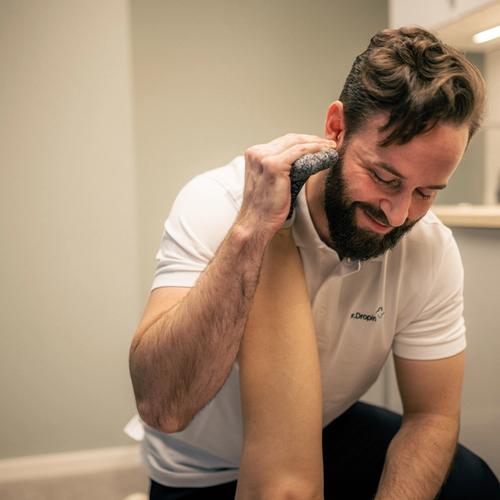Running Injuries: Prevention, Treatment, and When to Seek Help
Author: Fysioterapist Steinar Heiberg
Published: 2.10.2025

What are running injuries?
Running injuries include injuries to the muscles, tendons, ligaments, tendons, and joints that occur during or as a result of running or high-intensity exercise over time.
Typical options include:
- Shin splints
- Runner's knee (iliotibial band syndrome, patellofemoral pain syndrome)
- Achilles tendinitis
- Plantar fasciitis
- Stress fractures (in the calf, foot, or femur)
- Hamstring and quadriceps problems
- Hip and groin problems
- Causes and risk factors
To prevent and treat running injuries, it is important to understand the most common causes. Here are some key factors:
Chronic overload / too rapid progression
Increasing the amount of training too quickly is perhaps the most common cause. The load exceeds the musculoskeletal system's ability to adapt.
Inappropriate footwear or poor running technique
Worn or improper shoes can put increased strain on tendons and joints. Poor biomechanics (e.g. overpronation) can increase the risk.
Muscle and joint imbalances / weak core muscles
If certain muscles are weak or stiff, other structures can be overloaded.
Underlying biomechanical conditions
For example, leg length discrepancy, incorrect loading in the knee or hip, stiffness in the ankles, etc.
Lack of recovery and inadequate recovery
Too little rest, insufficient sleep and nutrition can weaken the ability of muscle and tendon structures to repair.
Symptoms and early warning signs
It is important to be aware of early signs so that the development of an injury can be stopped before it becomes serious:
- Pain or tenderness during or after running
- Stiffness or tenderness when walking/climbing stairs
- Swelling or signs of inflammation at the site
- Unexplained decrease in performance
- Pain that persists at rest or at night
If the pain persists for more than a few days or affects daily activity, you should consider contacting a physiotherapist or chiropractor.
Prevention: good habits for runners
Here are some recommendations that can help reduce the risk of running injuries:
- Increase training volume gradually (the 10% rule as a rough guideline)
- Vary running routes, surfaces and intensity
- Choose the right shoes and change them regularly
- Include strength exercises for the hip, core muscles, calves and ankles
- Work on flexibility and mobility
- Have good recovery habits: enough sleep, active rest and nutrition
- Listen to your body - reduce strain in case of pain
When prevention is not enough
At Dr.Dropin Fysikalske you will receive modern treatment and close follow-up for running injuries and other muscle and joint problems. Our services include:
- Physiotherapy with load-controlled rehabilitation
- Chiropractic treatment and joint mobilization
- Manual therapy and mobilization
- Customized training and exercise programs
- Treatment of stress-related complaints related to running
- Pressure wave therapy
- Needle therapy (IMS / dry needling)
- Running analysis, taping and support
- Sole adjustment
Our physiotherapists and chiropractors can refer to MRI, X-ray and other imaging examinations when necessary, and we work closely with Dr.Dropin doctors for comprehensive follow-up and further investigation.
Read more about our physiotherapists and chiropractorsWhen should you see a doctor?
In some cases, physiotherapy or conservative treatment alone is not enough. Consider contacting a doctor if you have:
Acute, sharp pain after a fall or trauma
Numbness, tingling or loss of strength in the leg/foot
Suspected stress fracture
Pain that does not improve within 2–3 weeks
Swelling with fever or strong local signs of inflammation
Dr.Dropin offers general practitioner consultations, and we can refer to imaging or a specialist when necessary.
Read more about our General PractitionersSummary
Running injuries can affect both beginners and experienced athletes, but many injuries can be prevented with proper progression, strength training and good habits. If pain persists, early intervention is recommended with our professionals at Dr.Dropin Fysikalske, who can help you with examination, treatment and rehabilitation plan.
Read more: